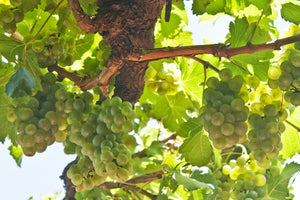
Melon de Bourgogne
Melon de Bourgogne, also known as Melon in the United States, is a white grape variety that is most commonly associated with the Muscadet wine region in the western Loire Valley. This grape variety is known for its naturally high acidity, but can sometimes struggle to achieve a good concentration of flavor. The best wines made from this grape variety show apple and citrus flavors, with underlying mineral notes and a hint of saltiness, reflecting the region's maritime geography. Melon de Bourgogne was introduced to the Muscadet region in 1709 after a harsh winter killed many of the Loire's vines. The grape variety is particularly well suited to the cool climate of the region and is known for its resistance to spring frosts. Despite its hardiness, the grape variety is susceptible to mildew and is less commonly found in other regions. In the winery, the grapes are often subjected to extended lees contact, which gives the wine more depth, texture, and complexity, but at a higher price. In the 20th century, Melon de Bourgogne was mistakenly identified as Pinot Blanc in the US and Australia and many of the Californian plantings were subsequently removed in favor of more popular varieties. Today, it is still grown in small quantities in the Willamette Valley of Oregon and in Washington.
